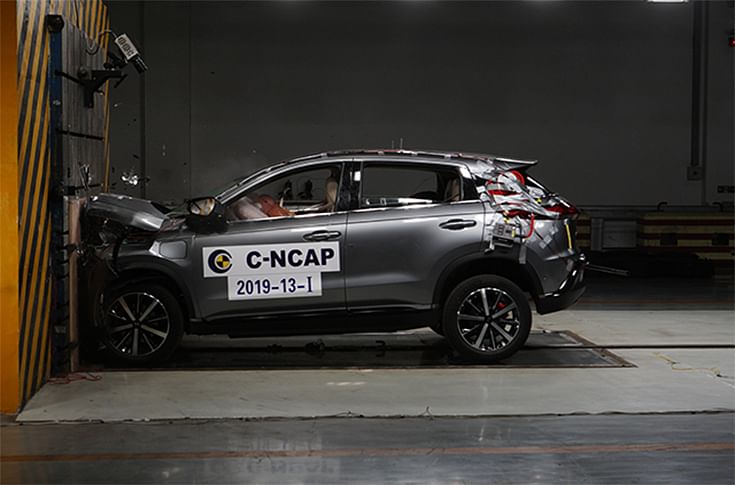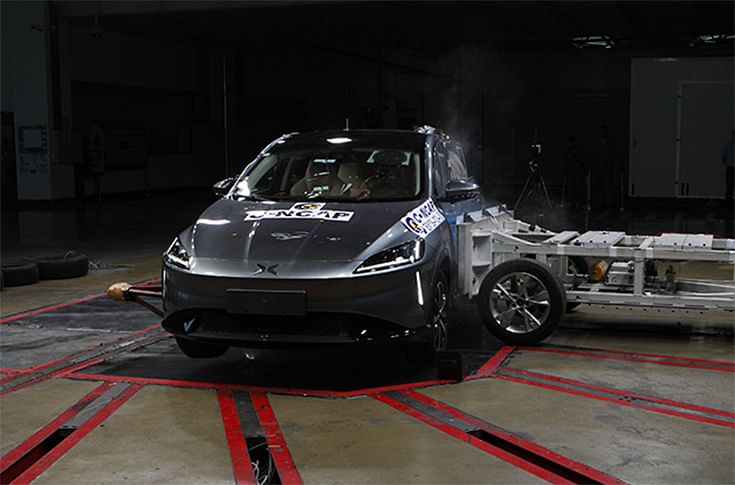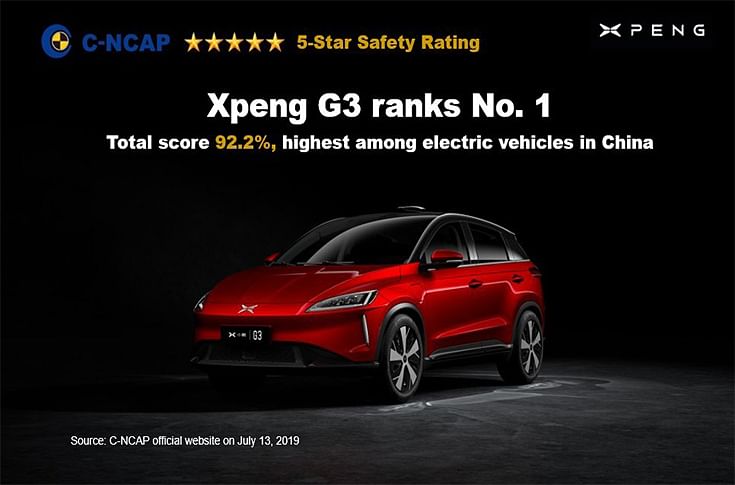C-NCAP announces Xpeng G3 the safest EV in China
Xpeng Motors’s G3 EV SUV is one of the first EVs in China to gain a 5-star rating after the new set of evaluation standards came in from C-NCAP in 2018.
The Xpeng Motors’s G3 in its 2019 version obtained the highest total score of 92.2 percent among electric vehicles in the latest China New Car Assessment Program (C-NCAP) safety test.
The G3 smart EV SUV achieved a 5-star standard safety rating and was among the first batch of new energy vehicles that received 5-star rating by C-NCAP after it released new rules in line with international standards. C-NCAP released the new version of its regulations in 2018, adding safety evaluation standards for pure electric vehicles and performance evaluations for active safety functions.

According to the official C-NCAP results, the G3 received 96.50 percent in passenger safety and 94.09 percent in active safety, both the highest rankings among electric vehicles in this latest safety evaluation by the Chinese authority.
In C-NCAP's most stringent 64-kilometer offset collision, the G3 received the score of 19.758 among all types of vehicles. In addition, the G3's active safety system has gone through over 3,000 hours of data acquisition. The road test for its automatic emergency braking function recorded zero malfunctions in every 150,000 km.
"The C-NCAP results are a strong endorsement of Xpeng's in-house R&D, safety design and quality control capability," said Xpeng Motors chairman and CEO He Xiaopeng. "The new C-NCAP regulations are the most stringent yet for EVs, but the G3 has matched or exceeded these standards, rating it the safest electric vehicle in the China market."

The G3's comprehensive active and passive safety features are supported by its strong body architecture, with 70 percent of the vehicle body made of high-strength steel (including 6.7 percent ultra-high-strength steel and 1500MPa 7.5 percent thermoformed steel), creating a rigid safety cage to withstand collisions from different directions. This architecture can quickly disperse collision forces through various nodes, effectively reducing locally concentrated force to help prevent the vehicle body crumpling in a collision.
During the R&D phase, Xpeng conducted five rounds of safety tests on the G3, including 63 vehicle collisions and 40 sliding tests to cover a full range of collision scenarios. The G3 also went through more than 1,000 structural optimisation simulations in the R&D phase, taking more than 30,000 hours.

The active safety systems in the 2019 G3 includes forward collision warning (FCW), automatic emergency brake (AEB) with pedestrian protection, lane departure warning (LDW), intelligent speed limit assist (SLA), blind spot detection (BSD), lane change alert (LCA), rear cross traffic alert (RCTA) and MSB electric seatbelt (with collision warning).
Also read: Renault to introduce 8 new electric vehicles in 2022
EIB loans €73.5 million to Barcelona for hybrid, CNG and electric vehicles
Mahle develops new oil management module for electric vehicles
RELATED ARTICLES
Horse Powertrain reveals hybrid conversion for electric cars
Engine-making joint venture of Geely and the Renault Group announces new hybrid powertrain that fits into the same space...
Aisin to produce hybrid motor for Mitsubishi in Thailand
The hybrid drive motor and gearbox, will be produced at Aisin Powertrain (Thailand) Co for use in the Mitsubishi XForce ...
GM reports strong Q1 sales in China, demand for EVs and hybrids surges 53%
General Motors and its joint ventures in China have sold more than 442,000 units between January and March 2025.






 By Autocar Professional Bureau
By Autocar Professional Bureau
 23 Jul 2019
23 Jul 2019
 9339 Views
9339 Views









